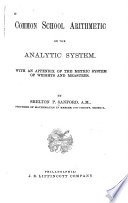 | John Dougall - 1810 - 734 pages
...whom it is addressed, is the Drawee, and also the Acceptor, when he engages to pay the bill ; and he to whom the money is to be paid is called the Payee. Besides these, other persons are frequently concerned with Bills of Exchange, such as the buyer or... | |
 | Archibald Montgomerie - 1865 - 106 pages
...bill—he is then called the Acceptor, and is bound to pay the amount when the bill falls due. The party to whom the money is to be paid is called the Payee, and the Drawer may make himself, or any one else, he pleases, the Payee. The following is the form... | |
 | Shelton Palmer Sanford - Arithmetic - 1872 - 404 pages
...signs the bill is called the DRAWER or MAKER; the person on whom it is drawn is called the DRAWEE ; and the person to whom the money is to be paid is called the PAYEE. ART. 300. Exchange is said to be at par when a given sum at the place from which it is remitted will... | |
 | Ward, Lock and co, ltd - 1884 - 958 pages
...is called the " Drawee " ; but after he has " accepted " the bill he is called the " Acceptor." AB, the person to whom the money is to be paid, is called the " Payee." A Promissory Note, or note of ham! as it is sometimes called, is a written promise from the debtor... | |
 | Myron Tuthill Bly - Business law - 1891 - 222 pages
...certain sum of money to a person named in the agreement, upon the occurence of the death of the insured. The person to whom the money is to be paid is called the beneficiary. The agreement is primarily to pay upon the occurence of death. The money may be payable... | |
 | Thomas Raeburn White - Commercial law - 1900 - 376 pages
...promises to pay by affixing his signature to the instrument is called the "maker" of the note; the one to whom the money is to be paid is called the "payee." Hereafter when we refer to the man who promises we shall call him the " maker, " and when we refer... | |
 | Samuel Wesley Baird - Arithmetic - 1901 - 168 pages
...two parties, the maker and the payee. The party who promises to pay is called the Maker; the party to whom the money is to be paid is called the Payee. The Face of a note is the amount written in the body of the note, and usually in figures at the top or... | |
 | Samuel Wesley Baird - Arithmetic - 1901 - 388 pages
...two parties, the maker and the payee. The party who promises to pay is called the Maker ; the party to whom the money is to be paid is called the Payee. 520. The Face of a note is the amount written in the body of the note, and usually in figures at the... | |
 | Edward Gideon - 1902 - 272 pages
...or Promissory Note, is a written promise to pay a sum of money at a given time, for value received. Note. — The person who signs the note is called the Maker. The person to whom or to whose order a note is made payable is the Payee. The owner of the note is the Holder. The person... | |
 | John William Hopkins, Patrick Healy Underwood - Arithmetic - 1903 - 578 pages
...The person who promises to pay is called the maker. John Mosley is the maker of the first note above. The person to whom the money is to be paid is called the payee. The person who has legal possession of a note is called its holder. The sum specified in a note is called... | |
| |